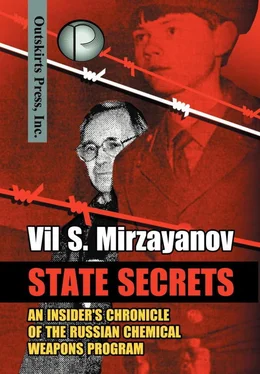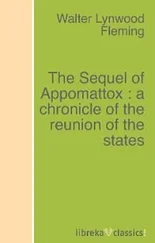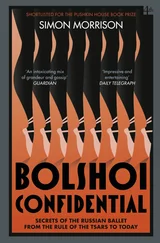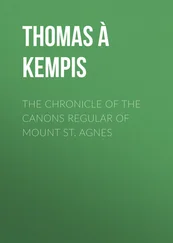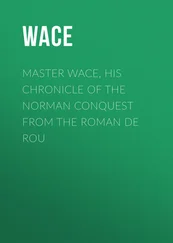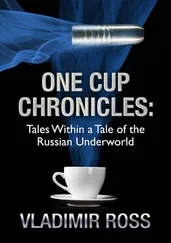Vasiliev, lawyer, 286, 291 Yakov, Valery, 435
Veremchuk, V., 320 Yakunin, Gleb, 240, 254
Versen, F., 319 Yarovenko, Nikolai,128
Vershinin, N, 320 Yavitsky, Aleksander, 278, 281, 287,
Vietnam, 163, 227, 302 289
Vishnevskaya, Galina, 37 Yavlinsky, Grigory, 368
Vitchenko, Antonina, 175 Yeltsin, Boris, 140, 188, 234, 240,
Vlasov, general-traitor, 23 247, 248, 249, 251, 262, 266, 283,
Vlasov, Nikolai, 243 303, 313, 316, 318, 332, 350-354,
VNIIKANeftGas, 76, 77 356, 358, 360, 362, 366, 373, 407,
Volga, car, 104, 112; River, 115, 419, 423, 435
163, 164, 201, 203; Yudin, Victor, 378, 379, 383, 420,
Volgograd, 109, 123, 126, 148, 149, 421, 423
155, 159, 200-203, 233, 262, 322; Yushenkov, Sergei, 320, 352, 353
Industrial Association VPO
Khimprom, 203, 204, 216, 222, 223, Zadonsky, G., 279
232, 262, 308, 322; plant, 200, 202, Zalygin, Sergei, 381
203, 261, 308, 322 Zaozerov, Adolph, 145, 146
Volkova, Evgenia, 165 Zaritovsky, colonel, 384
Volkov, V.,320 Zaslavskaya, Tatiana, 320
Volsk, 109, 110, 115, 126, 128, 129, Zaslavsky, Victor, 215
147, 149, 154, 160, 163, 166, 193, Zasukhin, S., 279
216, 309, 325, 327 Zefirov, Nikolai, 100
Vorontsov, Nikolai, 406 Zemlyanishin, Ivan, 235, 246, 263,
Vozrozhdenie, island, 438 279
VX gas, 99, 108, 119, 121-123, 221, Zhakov, Alfred, 137, 224
237, 262, 265, 303, 304 Zheleznyakov, Andrei, 130, 131,
149-150, 233, 281, 297, 380
Zhiguli, 268
Zhiguli-luxe, 135
Zhirinovsky, Vladimir, 376
Zhukhovitsky, Aleksander, 64, 66, 67,
69, 71
Zilyaev, Gali, 25
Zoryan, Vladimir, 92
Zuberbiller, Olga, 41
Outskirts Press, Inc.
Denver, Colorado
The opinions expressed in this manuscript are solely the opinions of the author and do not represent the opinions or thoughts of the publisher. The author has represented and warranted full ownership and/or legal right to publish all the materials in this book.
State Secrets: An Insider’s Chronicle of the Russian Chemical Weapons Program
All Rights Reserved.
Copyright © 2009 Vil S. Mirzayanov
V3.0
Cover design by Ratmir Akhiyarov
This book may not be reproduced, transmitted, or stored in whole or in part by any means, including graphic, electronic, or mechanical without the express written consent of the publisher except in the case of brief quotations embodied in critical articles and reviews.
Outskirts Press, Inc.
http://www.outskirtspress.com
Paperback ISBN: 978-1-4327-2566-2
Hardback ISBN: 978-1-4327-1923-4
Library of Congress Control Number: 2008927116
Outskirts Press and the “OP” logo are trademarks belonging to Outskirts Press, Inc.
PRINTED IN THE UNITED STATES OF AMERICA
Geoffrey Hosking, Russia, People and Empire (London: HarperCollins, 1997); Dominic Lieven, Empire: The Russian Empire and Its Rivals (New Haven, CT: Yale University Press, 2001, London: John Murray, 2000).
On Soviet policies to quell ethnic differences and increase their hold on power, see Robert Conquest, Stalin: Breaker of Nations (New York: Penguin, 1991); Ronald Grigor Suny, The Revenge of the Past: Nationalism, Revolution, and the Collapse of the Soviet Union (Stanford, CA: Stanford University Press, 1993); Terry Martin, The Affirmative Action Empire: Nations and Nationalism in the Soviet Union, 1923-1939 (Ithaca, New York: Cornell University Press, 2001); Harry W. Hazard and Robert Strausz-Hupe, The Idea of Colonialism (New York: Fredrick A. Praeger, 1958), especially chapter 4, “Russian Colonialism: Tsarist and Soviet Empires.”
In December 1929 Stalin called for the “liquidation of the kulaks as a class” because he claimed they were wealthy and the class enemy of the state, which led and exploited the peasantry to deliberately thwart the government’s Five Year Plan. In reality, most kulaks only owned one or two pieces of livestock and had managed to employ a few other peasants. Kulaks were forced into state run collective farms or sent to brutal labor camps. See Robert Conquest, The Great Terror: A Reassessment (Oxford: Oxford University Press, 1990); John Thompson, A Vision Unfulfilled: Russia and the Soviet Union in the Twentieth Century (Lexington, MA: Heath Publishers, 1996): 261-4.
For more on the civil war and famine, Richard Pipes, Russia under the Bolshevik Regime (New York: Vintage Books of Random House, 1994); Fisher, H. H., The Famine in Soviet Russia (1919-1923): The Operation of the American Relief Administration (New York: MacMillan, 1927).
On the fate of Soviet prisoners of war, see Nikolai Tolstoy, The Secret Betrayal: 1944-1947 (New York: Scribner, 1978); Mark Elliot, “The United States and Forced Repatriation of Soviet Citizens, 1944-1947,” Political Science Quarterly 88, No. 2 (June 1973): 253-75; Mark Elliot , Pawns of Yalta: Soviet Refugees and America’s Role in Their Repatriation (Urbana, Ill: University of Illinois Press, 1982); John Whitley, “Countless Prisoners Of War Handed Back To Stalin By Churchill,” at http://www.rense.com/general47/butch.htm; Aleksey I. Briukhanov, “Vot kak eto bilo: O rabote missii po repatriatsii sovetskikh grazhdan” Vospominaniia Sovetskogo Ofitsera (Moscow, 1958): 38.
The Tatar version of Radio Liberty – Radio Azatlyk right now is broadcasting from Prague (Czech Republic) paid for by American taxpayers’ dollars, but its journalists are working under the supervision of the Russian Government and this radio has nothing to do with its very title and the distribution of real information about American democracy and American values.
The Communist Party sponsored an organization, the Komsomol, or Communist League of Youth, for those between age fourteen and early thirties, so that they could learn the proper things to become party members. Komsomol members provoked political activity, completed social projects (e.g., planting trees along urban roads), and supposedly served as role models for socialist behavior. John Thompson, A Vision Unfulfilled: Russia and the Soviet Union in the Twentieth Century (Lexington, MA: Heath Publishers, 1996): 261-4.
One plant was situated in Salavat, in Bashkortstan, and the other in Angarsk, which is located on the Angara River in the Irkutsk region, about 30 kilometers north-west of the city of Irkutsk and 50 kilometers north of the western tip of Lake Baikal.
Thirty years later, in 1994, I was happy to run into this same man at an international meeting, devoted to the role of mass media in the democratization of society. I was very glad to see him. He was a Doctor of Jurisprudence, a professor, and the head of the Department of Criminal Law at the Moscow Law Institute. I realized then that my old colleague was very embarrassed about his worker’s past.
The term “sharashka”was first introduced by Aleksandr I. Solzhenitsyn, The Gulag Archipelago, 1918-1956, An Experiment in Literary Investigation I-II (New York: Harper & Row, Publishers, 1973). Also see Ann Applebaum, Gulag: A History (New York: Doubleday, 2003).
The renowned scientists Rudolf Udris, Peter Sergeev, Michael Nemtsov, and Boris Kruzhalov, who were the first to develop the hydro peroxide process for producing phenol and acetone in 1946, were working in such a chemical sharashka . Udris ultimately committed suicide. Sergeev was barely released from this sharashka when his son, Andrei P. Sergeev, who was also a chemist, was jailed there on charges of anti-Soviet agitation. See M.S. Nemtsov, “At First We Were Four People,” Chemistry and Life , no. 2 (1989); Andrei P. Sergeev, “How I Participated in Operation ‘Yprit,’” Izvestia , 11 August 1992, which chronicles the dumping of around twenty tons of bombs containing mustard gas.
Читать дальше
